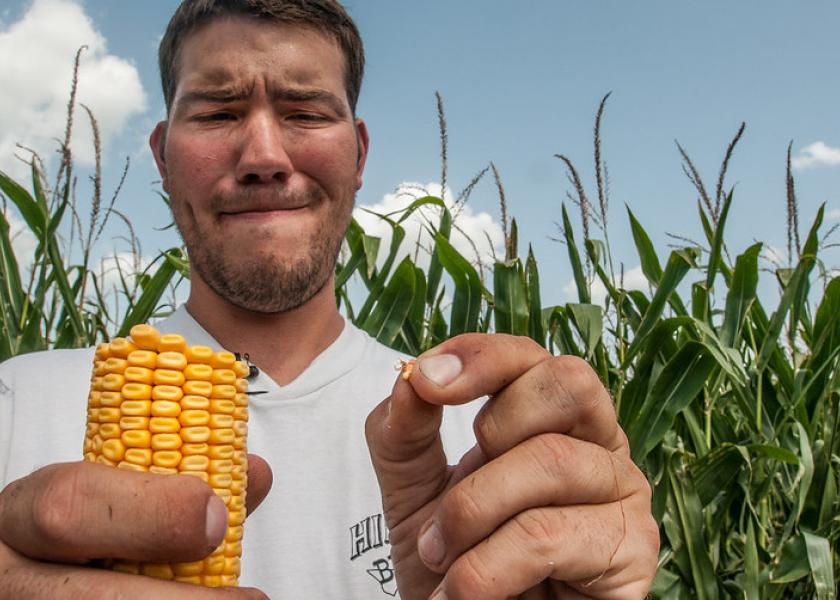AFBF Calls on NASS to Increase Transparency, Push Technology Use

The American Farm Bureau Federation (AFBF) wants USDA’s National Agricultural Statistics Service (NASS) to improve transparency and better embrace emerging technology in making crop estimates, determining ag census numbers and other ag reporting. In return, the farm organization vowed to push Congress for more funding for the agency and to encourage members to more fully participate in NASS surveys.
The recommendations come from a 10-member NASS working group which formulated the proposed action plan over a four-month period.
“While NASS may have a gold standard reputation for agriculture statistics globally, U.S. farmers’ confidence in their reports has unfortunately declined,” said AFBF President Zippy Duvall in a release announcing the report. “Large changes, especially the last two years due to adverse weather events, in estimates of planted area, crop yields and inventory levels have caused wild swings in markets and left farmers questioning the agency’s ability to respond quickly to rapidly changing conditions on the ground. We hope the work done by this group will provide a framework for USDA to make timelier adjustments to these key reports and restore trust in the data we’ve relied upon for so long. NASS has been responsive to feedback in the past and we are committed to working with the agency to achieve these new goals.”
The report notes that NASS received $10 million in the FY 2021 budget to study existing datasets such as satellite data, other survey data held by USDA and other agencies, to see if it could be used to improve early-season crop predictions. AFBF is encouraging NASS to expand on that study and look at ways to use more predictive technology in the agency’s reporting.
“NASS could improve and complement survey-based statistical or subjective estimations by investing in more pilot projects using remote sensing data, Landsat data, monitoring and decision-making applications, machine-learning technology, and spatial and spectral imaging using high-frequency time-series satellite data from space-based assets. For example, high-frequency satellite data could be used to verify in-season crop conditions, yield and acreage reports. Similar data could also be used to estimate in-season damage to crops from natural disasters,” the report says.
Related:
NASS Crops Chief Talks Data that Drove January Surprises
USDA Cut Ethanol Demand; USDA Chief Economist Explains Why
Markets Now with Tyne Morgan: Why History Shows $16 Soybeans are Possible
What Was Behind USDA’s Big Corn Yield Cut? USDA Chief Economist Explains
“We need more accuracy in the reporting, and we need a lot more people responding to the request or the surveys,” Duvall told U.S. Farm Report’s Tyne Morgan. “We think that if you look around agriculture and around the world, there's a lot of technology out there, it's not being utilized by NASS. And we think we need to increase some funding there, to update technology, we need some more transparency, because when they come out with those announcements, it could swing commodity prices, either way, extremely, extremely. And it really does a lot of detriment to our farmers if they're not accurate.”
When asked by Farm Journal to respond to the recommendations, NASS officials said they are already working to address many of the concerns.
"We appreciate our partnership with the American Farm Bureau Federation (AFBF) in the development of AFBF-NASS Working Group report and recommendations," NASS emailed Farm Journal in response to the report. "We feel confident the items recommended in the report either are being addressed or are underway, and we look forward to enhancing our communications in the near future. We greatly appreciate the Farm Bureau’s commitment to addressing these topics and helping us better engage producers in assuring NASS’s mission of providing timely, accurate, and useful data in service to U.S. agriculture."
To increase transparency, AFBF recommends:
- Town hall meetings either virtually or in-person to show the data collection and calculation process
- Have NASS data-collection and analysis peer-reviewed by land-grant universities
- Include a section in each report explaining the statistical methodology used
- Include a “Special Note” explaining any significant revisions to previously-reported numbers
- If a significant event occurs after data is collected that could impact future reporting, include a “Special Note” indicating that “does not include the most up-to-date market observations.”
- Datasets with significant anomalies should be excluded until it can be reviewed by NASS staff
The report notes that funding for NASS has remained largely stagnant for more than a decade. The organization vows to push Congress for additional funding to implement the recommendations in the report.
The report notes that farmers also play a role in improving accuracy of NASS reports and Farm Bureau vows to push for higher participation in an NASS surveys and the Census of Agriculture.








